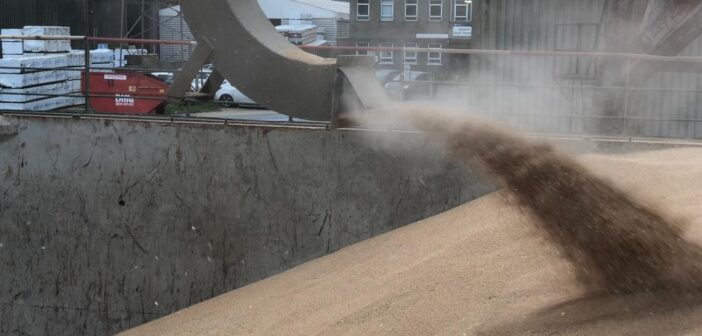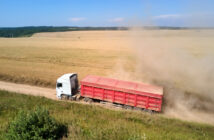This week Mr Putin announced that Russia was halting its participation in the Ukraine export corridor, more commonly known as the Black Sea initiative. Initially brokered by the UN and Turkey in July 2022 for the shipment of foodstuffs and fertiliser from Ukraine via the Black Sea for 120 days. The signatories of the agreement (Russia, Turkey, Ukraine, and the UN) all agreed to extend the deal for a further 120 days in November. However, Russia then only agreed to an extension of 60 days in March and again in May, which expired this week (17th July).
Directly after their withdrawal, Russian missile attacks on Ukrainian Black Sea ports have caused damage to the country’s export infrastructure, meaning that grain will now have to be shipped via European routes or via the Danube River. Additionally, the hype up in military action will also cause ship owners and insurers to be less confident in sending ships into what is now a ‘war zone’ environment.
As a result of this news UK feed wheat futures in Monday traded higher than Fridays close. The November 2023 contract traded as high as £202.80/t. Prices did soften a little later in the day closing at £196.00/t just 30p below Fridays close.
Millie Askew, lead analyst AHDB, said: “The war and the implications of the war in Ukraine is now somewhat factored into markets, with prices being driven once again by the wider supply and demand fundamentals. In terms of total grains, globally this season, we are expected to have an ample supply and demand balance, which is somewhat bearing down on markets. That said, the wheat balance sheet looks to be more tightly balanced, which has been outweighed by plentiful maize supply.
War factored in
“It’s important to note that Ukraine are expected to have smaller cereal crops once again this season (2023/24), due to the impact of war in the country. The Ukrainian consultancy, UkrAgroConsult, have total grain production for 2023/24 currently pegged at 47.34Mt. This is down from 53.86Mt last season, which was also a smaller production year. With smaller crops, comes a smaller exportable surplus.
“Ukraine still has the option to export grains via road and rail through Europe to its end destination. While neighbouring EU countries have bumper stocks of grain carried over from 2022/23, partly due to cheap Ukrainian supply, it is likely that Ukrainian grain will be allowed to enter these countries, as long as it is to transit to further destinations, as is the case now. Obviously exporting grain this way, takes more time / will be more expensive.
“The other option Ukraine has is to export via river, specifically the Danube, which is likely to become a popular option. However, this will also lead to increased logistical costs and will also take more time.”
IN its weekly market report, ADM claim that fundamentally not a lot has changed. The UK has still carried out a historical high level of grain, and with another large crop looming, we will need to see additional demand surface to start eating away at the potential carry-out for 2023/24. Hopefully, domestic demand will improve, but we will need to become export competitive very soon. The recent rally in sterling certainly hasn’t helped, but with talk that further rate rises may be less than anticipated, mainly due to the unexpected fall in inflation, the slight fall recently has led to the UK becoming a bit more competitive, although we still remain around £10 away from actual competitiveness, in the deferred positions.
In summary, ADM added that the market has built-in weather premiums, it has also now built-in ‘war premiums’, and we would expect this to continue to underpin values, certainly in the short term. However, the UK remains uncompetitive for export, and as mentioned in previous reports, any rally provides UK growers with another opportunity to increase their marketing activity. We may not yet have seen the top of this one, but UK fundamentals still point to the need for lower UK farm prices.




